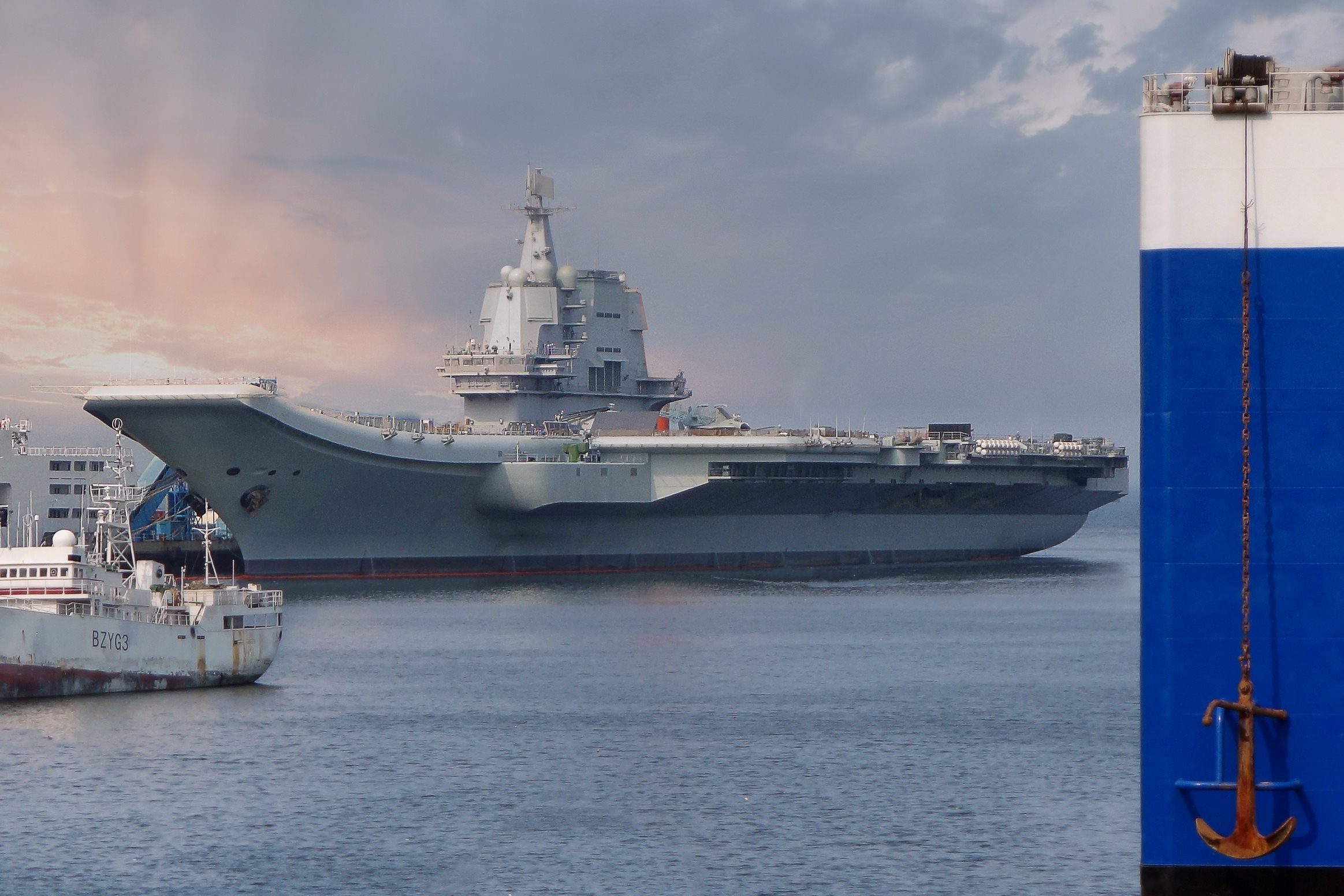Yankeeland is fucked
..
Chicons land bagus
China’s Navy Deploys Triple Carrier Fleet, Icebreakers, and 400 Joint Ships in Massive Show of Strength
by
Captain John Konrad (gCaptain) In an unprecedented display of naval power, China has deployed
three aircraft carriers at sea simultaneously for the first time. The People’s Liberation Army Navy (PLAN) has reached a new milestone, showcasing its rapidly expanding naval capabilities and its ambitions to project power far beyond its shores. This comes jsut one month after
China deployed three icebreakers to Arctic and a week after China and Russia deployed over 400 warships and 120 aircraft in operation
Ocean 2024.
The
Liaoning and
Shandong, both established assets of the Chinese fleet, were joined by the
Fujian, China’s third and largest carrier and PLAN’s first domestically designed and built. Though still in sea trials, the Fujian’s presence
signals a significant step forward in China’s naval aviation program.
LATEST VIDEOS
A Strategic Triad
Last week,
satellite imagery confirmed all three carriers were operational at sea. The Liaoning was spotted in the Philippine Sea, the Shandong off Hainan Island, and the
Fujian undergoing trials near Shanghai. Each carrier group was flanked by an array of destroyers, frigates, and support vessels, reinforcing the PLAN’s growing ability to conduct coordinated, complex operations across multiple theaters.
China’s two operational carriers, Liaoning and Shandong, have frequently been deployed together, but the addition of the Fujian hints at the PLAN’s plans for more routine multi-carrier operations. This summer alone saw three such deployments, emphasizing the growing normalization of China’s carrier presence in the Western Pacific.
Strategic Implications and Regional Reactions
China’s carrier operations extend beyond mere display. The Liaoning’s recent maneuvers near Taiwan and through Japan’s Okinawa Prefecture send a clear message to regional powers. The ability to operate carriers east of Taiwan provides the PLA with another vector to strike and blockade the island, should conflict arise.
This aggressive stance has not gone unnoticed. Taiwan’s Minister of Defense, Wellington Koo, warned of the increased difficulty in distinguishing between Chinese military exercises and potential offensive operations, heightening the island’s state of alert.
Meanwhile, the U.S. Navy’s USS Theodore Roosevelt returned to the South China Sea, after deploying to the middle east and t
emporarily leaving no US carriers in the Western Pacific underscoring the growing competition in these strategic waters.
A Broader Power Play: Russia and China’s Joint Show of Strength
Adding another layer to this strategic puzzle, China and Russia recently conducted
Ocean 2024, a massive naval exercise in the Pacific, Arctic, Mediterranean, Caspian, and Baltic seas. Over 400 warships and 120 aircraft participated, demonstrating a united front aimed squarely at challenging Western naval dominance.
During these exercises, North American Aerospace Defense Command (NORAD) tracked Russian aircraft, including Tu-142s and IL-38s, entering the Alaska Air Defense Identification Zone (ADIZ). While NORAD downplayed the events as routine, this pattern of behavior suggests a growing willingness by Russia to test U.S. defenses and assert its presence in the Pacific.
Arctic Naval Flex
China continues to push ahead with the rapid expansion of its Arctic-capable fleet. For the first time it
dispatched three icebreakers into the Arctic this summer.
The U.S., meanwhile, will remain without surface presence in the Arctic for the remainder of the year, possibly longer. Following
last month’s fire aboard Coast Guard icebreaker Healy the vessel had to abort its Arctic patrol returning back to its homeport Seattle on a single engine. The only other USCG icebreaker,
Polar Star, remains currently dry docked in an attempt to squeeze a few more years of service life out of the 55-year old vessel.
China’s largest and most capable icebreaking research vessel,
Xue Long 2, departed for a months-long expedition in early July. Comparable in size and capability to
Healy, the vessel passed through the Bering Strait weeks later and spent more than two weeks in the waters of the Chukchi and Beaufort Seas to the north of Alaska, before continuing its voyage into the Central Arctic Ocean.
The smaller Z
hong Shan Da Xue Ji Di, an icebreaker operated by Sun Yat-sen University, set sail on a similar path at the end of July. It currently sits 200 nautical miles from Utqiagvik, formerly known as Barrow, in the Beaufort Sea.
What’s Next for the PLAN?
The Fujian’s full commissioning, expected as early as 2026, will further solidify China’s position as a global naval power, expanding China’s capability to project power and launch drone operations.
Despite being outnumbered and outclassed by the U.S. Navy’s fleet of 11 nuclear-powered supercarriers, China’s growing carrier force and its integration into broader regional and global military strategies cannot be ignored. As the PLAN continues to mature, the Western Pacific will witness a more assertive and capable Chinese naval force, reshaping the balance of power in the region and beyond.
Related Video – China’s Aircraft Carriers are Catching Up
Tags:

